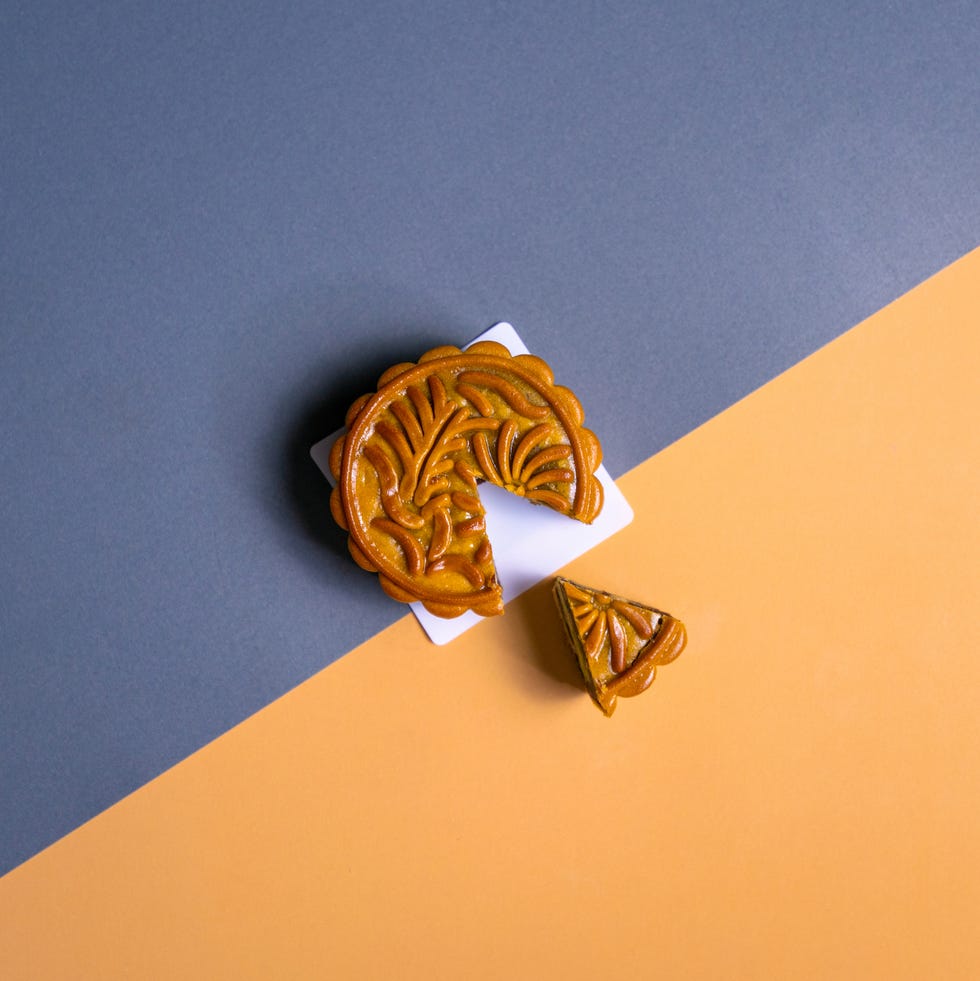| Minhae Shim Roth |
The Mid-Autumn Festival is a major fall holiday celebrated in many Asian communities around the globe, much like Lunar New Year in winter. Most commonly associated with Chinese mooncakes — and sometimes referred to as the Moon Festival or the Mooncake Festival — the Mid-Autumn Festival also highlights other delicacies like tarot, lotus root, duck and more. The Mid-Autumn Festival is also significant in other Asian countries: it’s called called Chuseok in Korea, Tsukimi in Japan and Bon Om Touk in Cambodia.
A holiday centering around the moon, the Mid-Autumn Festival is celebrated annually on the 15th day of the 8th month in the Chinese lunar calendar. This year’s Mid-Autumn Festival takes place on Tuesday, September 17, 2024. People believe the moon is the most full and luminous during this time of year, which is also the time of the mid-fall agricultural harvest, when abundant seasonal produce is reaped. The holiday is usually celebrated by spending time with loved ones, decorating and viewing lanterns, watching the evening moon, honoring ancestors and giving gifts.
In my family, we call Chuseok “Korean Thanksgiving,” and it is a time of gratitude, gathering and giving. I spend time with my friends of Asian descent and deepen our connection to our heritage and community. We’ll wear traditional clothing and exchange gifts like mooncakes, rice cakes and lots of fruit. Most importantly, we dine together and appreciate the amazing creations of Asian food, which you’ll find on the list below. From symbolic, historical and just downright delicious, you’ll find yourself at a table of delectable dishes and treats every Mid-Autumn Festival.
Mooncakes
Decorated golden pastries typically filled with sweet red bean or lotus paste, mooncakes are the delicious baked treats that are synonymous with the Mid-Autumn Festival in China. Resembling the shape of a full moon, mooncakes are a symbol of togetherness, wholeness and completeness and are often given as gifts during the Mid-Autumn Festival. Mooncakes can also be filled with rose, mung bean, lotus seed, pork or salted yolk, depending on the regional recipe.
Songpyeon
A Chuseok staple, Songpyeon is a Korean Mid-Autumn Festival delicacy dyed in subtle shades of pink, yellow, green and white. These dainty half-moon-shaped morsels are first stuffed with fillings such as sesame seeds, red bean, cinnamon, jujube, honey and pine nuts, and then steamed over a layer of pine needles. In Korea, Songpyeon symbolize the moon: the dough is rolled out in a full-moon-like circle and folded over to a half-moon shape after the filling is placed. An old Korean saying goes that making an artfully shaped Songpyeon will result in finding an attractive partner or birthing a beautiful child.
Hangwa
A type of Korean confections, Hangwa can be traced back to the Three Kingdom Period of Korean history, which ended in 688 C.E. These aesthetic snacks are made of grain flour, lightly sweetened with honey, syrup or sugar, and rolled in toppings like dried fruit, nuts and seeds. They come in a variety of shapes, from cylinders and spheres to cubes and cookies, and are beautifully packaged into gifts for Chuseok and other holidays.
Wine
What’s a celebration without a little tipsy revelry? Koreans drink a variety of different alcohols during Chuseok, including rice wine made with freshly harvested crops. A popular Mid-Autumn fest drink in China is Osmanthus Flower wine, which is associated with longevity. During the Han Dynasty in China, people would toast their elders and ancestors with a glass of Osmanthus wine, a tradition that continues today.
Duck
Roasted duck is a popular feast staple in China during the Mid-Autumn Festival. Flavorful and protein-rich, duck is also symbolically tied to Chinese history. In the mid-1300s, China was fighting the Yuan Dynasty from Mongolia. The name of the rivals sounded like the word for duck in a local dialect. The Yuan Dynasty was defeated during the Mid-Autumn Festival, so the phrase “eating duck” is synonymous with defeating an oppressor and is a common Chinese dish during the festival.
Seasonal Fruit
At the heart of the Mid-Autumn Festival is giving thanks for the bountiful and colorful fall harvest. Fruits are eaten as dessert, given as gift boxes and used as decoration during the festival. Common fruits are pears, pomelo, persimmon, watermelon and apples, which are associated with longevity, fertility and health. Pomelos are especially popular fruits in China as the Mandarin word for Pomelo sounds like a blessing for children.
Lotus Root
With its flavor and texture falling somewhere between a potato and a radish, the lotus root is a versatile food that can be fried, braised or sautéed with green onions and sesame seeds. This vegetable’s unique circular shape and linguistic roots in Cantonese is associated with good fortune, strong family bonds and togetherness.
Taro
With a creamy texture and a beautiful lilac hue, taro is a popular ingredient during the Mid-Autumn Festival. From a sweet mooncake filling to salad or soup, this versatile ingredient is used during the festival in many countries, including Vietnam and China. The tradition of eating Taro began in China during the Qing Dynasty in the 17th century with the belief that eating taro will drive away bad luck and attract good fortune.
Jeon
Jeon are crispy Korean pancakes made from a batter of egg and rice flour. Usually combined with vegetables, meat or fish, jeon are an essential part of any Korean Chuseok table. Often prepared with seasonal ingredients like pumpkin or mung bean for the festival, jeon represent the abundance of the harvest and symbolize peace with a harmony of ingredients.
Tsukimi Soba
Literally meaning “Moon-viewing soba” in Japanese, Tsukimi Soba is a bowl of soba noodles topped with a raw egg, which becomes poached when hot broth — made of dashi, soy sauce, sake and mirin—is poured over top of it. The yellow yolk of the egg is representative of the moon and many in Japan eat these noodles while they view the moon during the festival.






